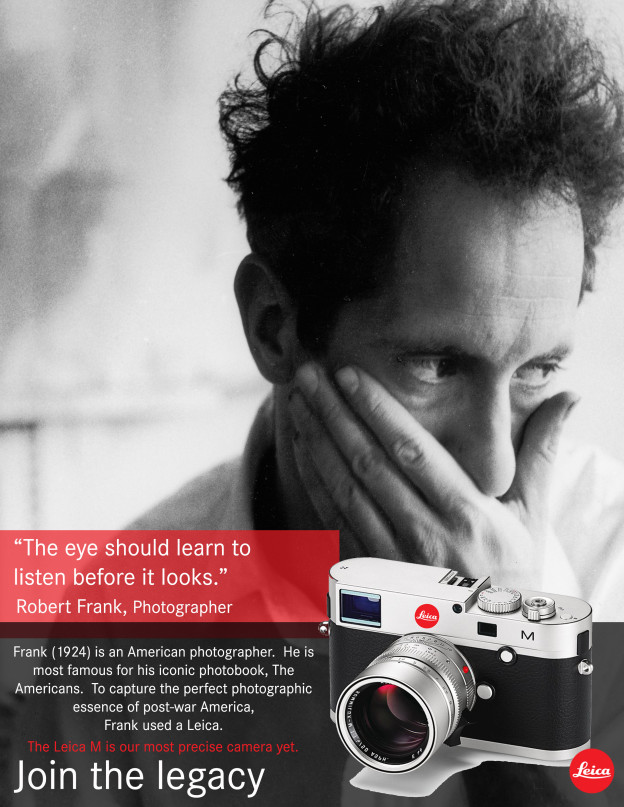
Leica advertising has always been stylish. Here’s two in particular that I admire. The first, above, is an early ’50s Modernist advert. Angular orientation with embedded triangles, sans serif typefaces coupled with old school italic script typeface…and the Piccadilly Circus Eros Statute. Eros is one of the primordial gods that emerged from Chaos when the world began, and is the driving force behind the unions of the primordial gods that initiated creation. Subtle. Well done. Someone was familiar with classic Greek mythology who expected his target audience to be so as well.
As for the camera, this “automatic focusing” Leica is an IIIa with a 50mm Summar. Beautiful.

Sixty years later and this ad for the M Monochrom. Monochrome (as in black and white) design can easily appear dull. But it’s perfect here (it is a Monochrom camera after all). This one cleverly uses font-weight to bold certain letters and make them stand out against the monochrome design. The bold camera and letters give a point of focus, while the small text does two things: It draws the reader in and helps align the bolded text. It’s “edgy”. It works.
In between these two are any number of inspired advertising designs. Here are a few more I like, all of them graphically simple while drawing your eye to where it needs to go:




*************
With the exception of the Monochrom ad (a nice throw back to the glory days), the advertising wonks at Leitz who designed these are long gone, replaced by a new, hip generation of 20 something Parsons Design grads who have no conception of the incredibly rich history of Leitz they could draw on. Who’ve been educated, not with the Greek classics, but via Facebook and social media.
So we get the argument from authority sublimated via the cult of personality: famous people achieving their photographic vision with their newest Leica, Lenny Kravitz stalking his prey in the East Village while rocking his rosta hat and a camera designed by Jackson Pollock.

Photo by Lenny Kravitz. Leica gave This Guy a Show at a NYC Gallery. This was the Photo they Used to Advertise It. Seriously.
*************

Erik van Straten. Exceptional.
Meanwhile, there are more than a few Leica users quietly producing stunning work. Look hard enough on the net and you’ll find them – not, mind you in some curated corner where money is looking to be made, or amongst the beautiful people of NYC or some self-appointed expert shill man looking to make a buck off the low-hanging Leicaphile fruit – but everyday people who’ve been using Leicas forever, producing bodies of work that should humble the “Leica Photographers” producing the banal shit above. Leica needs to start recognizing them, because they’re why Leica is famous. Leica should think about returning the favor.

Dragan Novakovac. Just a Guy With a Leica.











